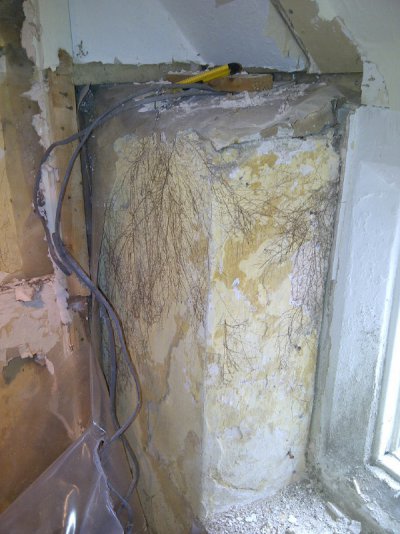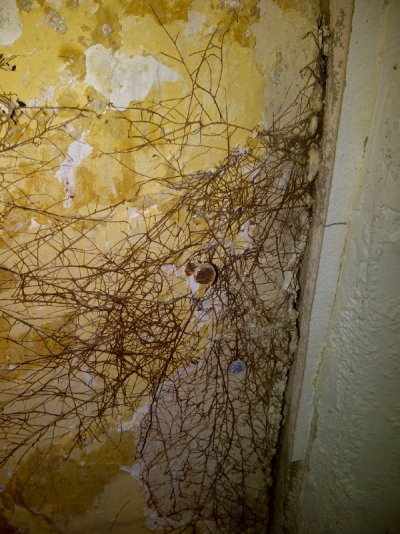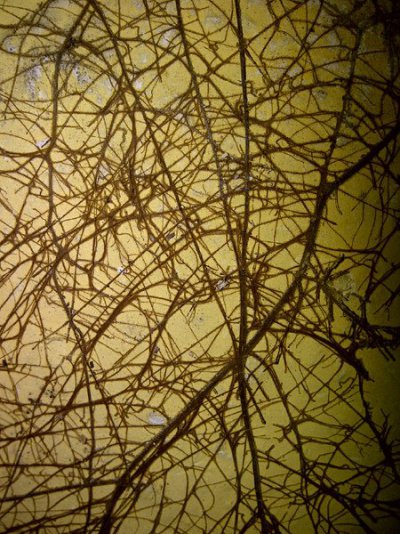FamilyWiggs
Member
- Messages
- 3,452
- Location
- Flintshire, N Wales.
OK - so I've spent the past day or two stripping the dry-lining and polythene tanking out of what was my office to turn into a snug for the kids, and their games consoles.
I've exposed some nice things - the original stone walls and haired lime plaster with many many many layers of limewash. Thankfully all seems nice and dry, except round the windows which I think just need sealing/pointing properly.
When I removed the polythene from under the lintel over the window recess, the beam just fell into splinters on the sill. Assuming when the tanking was done in 1974 the beam was in reasonable condition (unless they were real cowboys and just tanked in a failing lintel), I'm wondering what has caused this collapse and whether I need to be worried. Since they appear to have shoved a load of cement mortar between the beam and the stone above forming a slim concrete lintel, I'm not too worried that the stonework will collapse this weekend instead of any of the past couple of decades.
Further worries - the roof purlins aren't socketed into the end-wall; they were simply resting on the mortar on top of the now disintegrated beam. The span to the end wall from where they are last supported is only about 8 feet, so again I am not hugely concerned immediately, but have propped them anyway. There is some evidence on the purlins of worm holes - but this is only to be expected with new timber (well, 1970s timber) as it dries out.
The other worry is that whilst the visible end of one purlin is solid, the other appears to have disintegrated like the beam - but I'm not sure if this is the remains of an old purlin I can see or the end of the new one.
The final worry is I have what appear to be some dead brown tendrils of something looking like ivy without the leaves - currently encased in polythene on one plaster wall - I'll try and post a pic when I have removed the polythene.
Pics follow, but my questions are:
a) what caused the failure of the original lintel - it is very dry and crumbly. Is it some dreaded kind of rot?
b) will I be OK to put a new lintel in and leave the purlins resting on it. To remove and replace those purlins will be a very major undertaking.
PIC: General view.
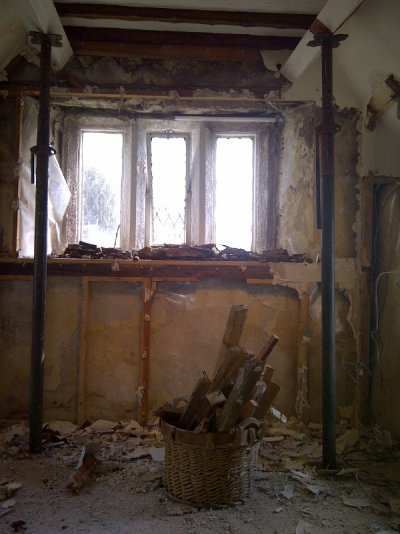
PIC: Not much of a lintel any more, is it?
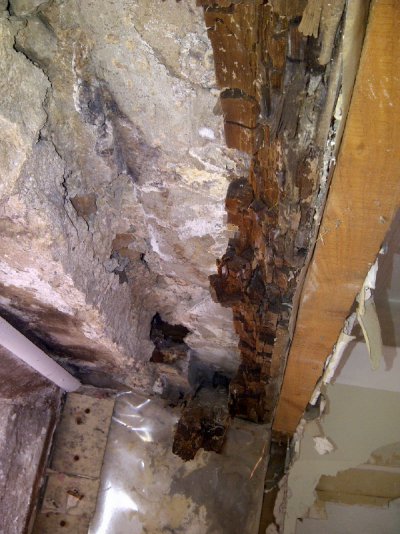
PIC: Close up of disintegrated beam.
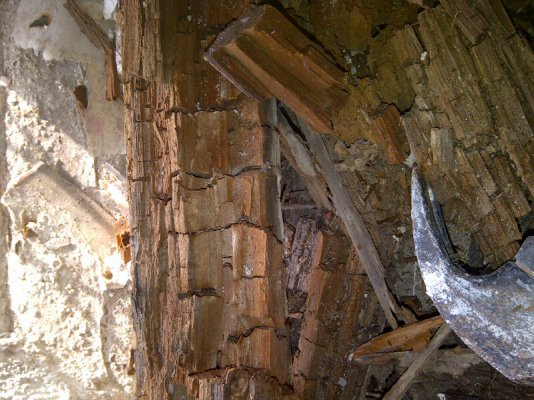
Many thanks for any advice.
I've exposed some nice things - the original stone walls and haired lime plaster with many many many layers of limewash. Thankfully all seems nice and dry, except round the windows which I think just need sealing/pointing properly.
When I removed the polythene from under the lintel over the window recess, the beam just fell into splinters on the sill. Assuming when the tanking was done in 1974 the beam was in reasonable condition (unless they were real cowboys and just tanked in a failing lintel), I'm wondering what has caused this collapse and whether I need to be worried. Since they appear to have shoved a load of cement mortar between the beam and the stone above forming a slim concrete lintel, I'm not too worried that the stonework will collapse this weekend instead of any of the past couple of decades.
Further worries - the roof purlins aren't socketed into the end-wall; they were simply resting on the mortar on top of the now disintegrated beam. The span to the end wall from where they are last supported is only about 8 feet, so again I am not hugely concerned immediately, but have propped them anyway. There is some evidence on the purlins of worm holes - but this is only to be expected with new timber (well, 1970s timber) as it dries out.
The other worry is that whilst the visible end of one purlin is solid, the other appears to have disintegrated like the beam - but I'm not sure if this is the remains of an old purlin I can see or the end of the new one.
The final worry is I have what appear to be some dead brown tendrils of something looking like ivy without the leaves - currently encased in polythene on one plaster wall - I'll try and post a pic when I have removed the polythene.
Pics follow, but my questions are:
a) what caused the failure of the original lintel - it is very dry and crumbly. Is it some dreaded kind of rot?
b) will I be OK to put a new lintel in and leave the purlins resting on it. To remove and replace those purlins will be a very major undertaking.
PIC: General view.

PIC: Not much of a lintel any more, is it?

PIC: Close up of disintegrated beam.

Many thanks for any advice.

